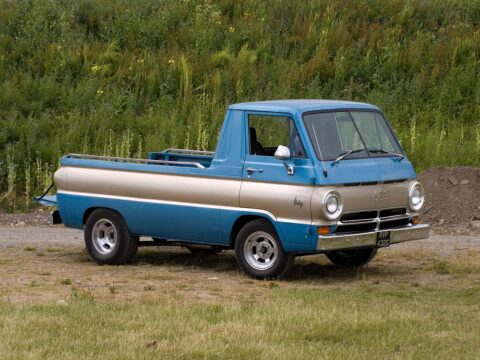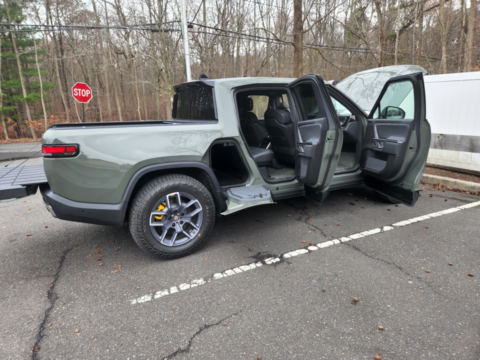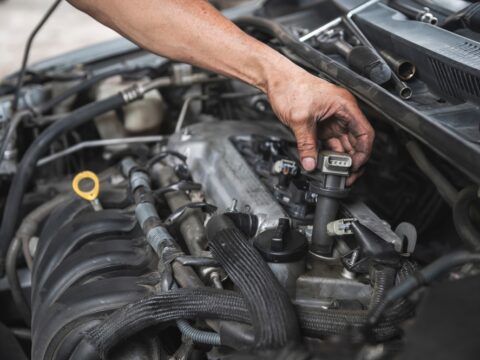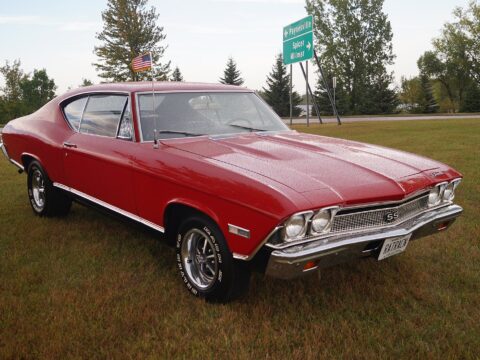If you’re looking to purchase a classic car but don’t have a big budget, then a C3 Corvette is a great option. Based on a concept car called the Mako Shark II, the third-generation Chevrolet Corvette was built between 1968 to 1982 and holds the record for the longest production run of any Corvette.
Unfortunately, the earliest examples of the C3 from 1968 to 1973 are probably off the table for the value-oriented collector. These particular years are considered more desirable because of their cleaner lines and old school chrome bumpers at the front and rear. These years were also available with a litany of high-performance engine options, including the “big block” 427 and 454 cubic inch motors.
But in the mid-1970s, new federal standards required bumpers which would survive a 5 MPH crash with no visible damage. As a result, Chevrolet was forced to equip the Corvette with flexible urethane bumpers which were painted the same color as the fiberglass body. In 1973, only the front bumper was urethane and in 1974, the front and rear bumpers were both urethane.
But the 1974-1982 C3’s aren’t less pricey only because of the bumpers. This was also a time period where performance was being severely hampered by a multitude of factors. Both gasoline and car insurance premiums were rocketing in price. This was coupled with the Clean Air Act which necessitated unleaded fuel, lower compression ratios, and emissions equipment such as catalytic converters. Things got so bad that in 1975, the base Corvette with an L48 350 cubic inch (5.7 liter) V8 could only muster 165 horsepower and 255 pound-feet out torque.
Okay, So How Much Are They?

It’s quite easy to find a decent running, driving project in the $7,000 to $10,000 range. Between $10,000 and $15,000, you’ll be able to choose from many excellent condition cars with nice paint that need little to no work to start enjoying immediately. Spending above $15,000 will land a late-C3 ‘Vette in show-car condition and/or with extremely low original mileage.
Of course, there are a few exceptions that will exceed this price range including:
- 1974 models with a 454 cubic inch “big block” motor.
- 1974-1975 convertibles, which were the last convertible ‘Vettes until 1986.
- 1978 limited edition Indianapolis 500 “Pace Car” replicas
These cars are generally simple and inexpensive to repair but there are a couple “gotchas” to look out for during the purchase process. In particular, watch out for rust on the frame, floors, and “bird cage,” which is the framework around the doors and windshield. Yes, even though the Corvette is fiberglass, there is still some structural steel present which can corrode. And given the relatively low values of these cars, the cost of a proper repair often eclipses the value of the car itself. If you’re in doubt how to properly assess the frame, paying a Corvette specialty shop to do a pre-purchase inspection can be a wise investment.
The C3 is a Blank Canvas

The performance of a stock late-C3 might be adequate for cruising around town, but most drivers will find the acceleration lacking by modern standards. But the good news is that there is probably no motor on earth that has more speed parts available for it than the 350 cubic inch small block Chevy, which resides under the C3’s long hood. A freer-flowing exhaust system, intake manifold, and new carburetor can go a long way to improve the C3’s street cred for a very small cash outlay.
For those shadetree mechanics that want to take it to the next level, there is the ever-popular LS swap, which transplants a 1997+ General Motors LS-based small-block engine into the C3’s engine bay. Depending on whether a newly rebuilt engine is purchased or a used one from a junkyard, and how much of the work you perform yourself, this swap can cost anywhere between $1,000 to $10,000 but you’ll literally be doubling your horsepower – or more!
There are also lots of modified C3s out there that are very fast around an autocross course or race track. These cars have factory four-wheel independent suspension and handled pretty well to begin with. But age and wear can be a factor. Even a low mileage car may have rubber components, like bushings, that are dry rotted. There is a simply massive selection of suspension and brake upgrades on the market. Everything from mild rebuild kits to wild packages with tubular a-arms and adjustable shocks.
In summary, the later C3 Corvettes make a perfect inexpensive classic car or weekend toy. With over 500,000 produced, they’re inexpensive to purchase, have a ton of parts support in the aftermarket for comfort or performance, and you don’t need to worry about keeping them all-original for the sake of resale value. And how could we forget? They all have removal t-top roof panels for topless cruising.














